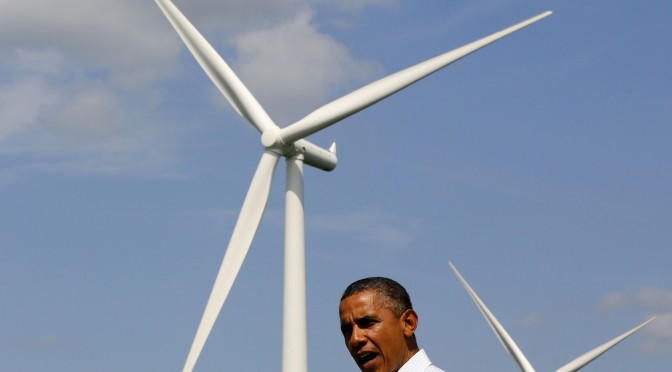When it comes to renewable energy, Californians hear a lot about solar power. Massive solar power plants are under construction in the desert and will soon be online. Solar panels adorn the roofs of a growing number of homes and commercial buildings. PG&E alone has 90,000 solar customers. Gov. Jerry Brown recently spoke at Intersolar, the solar trade show that met in San Francisco this month, and the state’s solar industry lobby is increasingly influential.
Wind, on the other hand, has a much quieter presence in the Golden State. But it’s not a small one: large wind farms in the Altamont Pass between Livermore and Tracy, Tehachapi near Bakersfield and the San Gorgonio Pass near Palm Springs make California one of the strongest wind markets in the nation. Wind energy projects totaling roughly 5,549 megawatts of capacity are operating in California today, providing enough electricity to power roughly 2 million California households, according to the California Wind Energy Association.
Among the reasons wind is often overlooked is that wind technology is relatively mature, so there aren’t many wind-energy startups attracting investments from Silicon Valley venture capital firms. But while wind doesn’t draw a lot of attention, advocates celebrate it as the “workhorse” of renewable power.
“There are currently 60,000 megawatts of wind capacity installed in the United States, compared to 10,000 megawatts of solar,” said Peter Kelley of the American Wind Energy Association. “There are 45,000 wind turbines installed; one in four of them is in Texas.”
The wind industry spent most of 2012 begging Congress to extend the production tax credit for utility-scale wind turbines. As part of the tax package passed in the drama surrounding the “fiscal cliff,” Congress extended the 2.2 cent per kilowatt tax credit for one more year. Previously, the tax credit applied only to wind projects that were fully built and producing electricity. Now it goes to any wind farm that is “under construction” by the end of 2013. The wind industry is hoping for another extension.
“The PTC has provided a window of opportunity to capitalize on advanced developments and repowers because the lead time for these developments fit in the extension window,” said Steven Stengel of NextEra, which has been replacing aging turbines in the Altamont Pass with newer, taller ones. “Our current California pipeline emphasizes 160 megawatts of existing projects in the Altamont Pass that we would like to repower. The earliest any of these megawatts could come online is 2015.”
Google (GOOG) has invested over $1 billion in renewable energy projects, including several wind projects. Among them: the Spinning Spur Wind Farm in West Texas, the Rippey Wind Farm in Iowa and Alta Wind Energy Center near the Tehachapi Mountains. Google also has a 37.5 percent equity stake in the Atlantic Wind Connection, a transmission project designed to spur offshore wind energy industry off the mid-Atlantic coast.
“Once completed, the AWC backbone will stretch 250 miles along the coast from New Jersey to Virginia, enabling the connection of up to 7,000 MW of offshore wind power, which could provide the energy equivalent of that used in 1.9 million households,” says Google in its blog about clean energy investments. “In addition to providing abundant clean energy to the region, the project can help create thousands of jobs and increase the reliability of one of the most heavily congested grids in the country.”
Private investors also are showing an interest in wind power, which has come down in cost thanks to American manufacturing advances and taller, larger turbines that help with economies of scale. Warren Buffett’s MidAmerican Energy, based in Des Moines, Iowa, plans to spend $1.9 billion to install hundreds of wind turbines in Iowa by the end of 2015.
Billionaire Philip Anschutz, whose vast fortune largely comes from oil, railroads, sports and entertainment, plans to build the Chokecherry and Sierra Madre Wind Energy Project on an Anschutz-owned ranch in south central Wyoming. With 1,000 turbines, it would be the largest wind farm in the United States; permitting is underway and construction is expected to begin in 2014. Sparsely-populated Wyoming exports most of the electricity that it produces, and Anschutz’s Power Company of Wyoming hopes to export its wind power to energy-hungry markets in the Southwest, including California.
California’s aggressive “Renewable Portfolio Standard” law requires utilities to purchase 33 percent of their electricity from renewable sources by 2020. Bioenergy, geothermal, solar, wind, wave and tidal power and small hydroelectric dams — which cause less harm to the environment than large hydro dams — all count toward meeting the law. Typically those renewable sources are located within California’s borders, but it can count as in-state if the electricity generated in Wyoming directly connects to the California grid.
Dana Hull, The San Jose Mercury News


